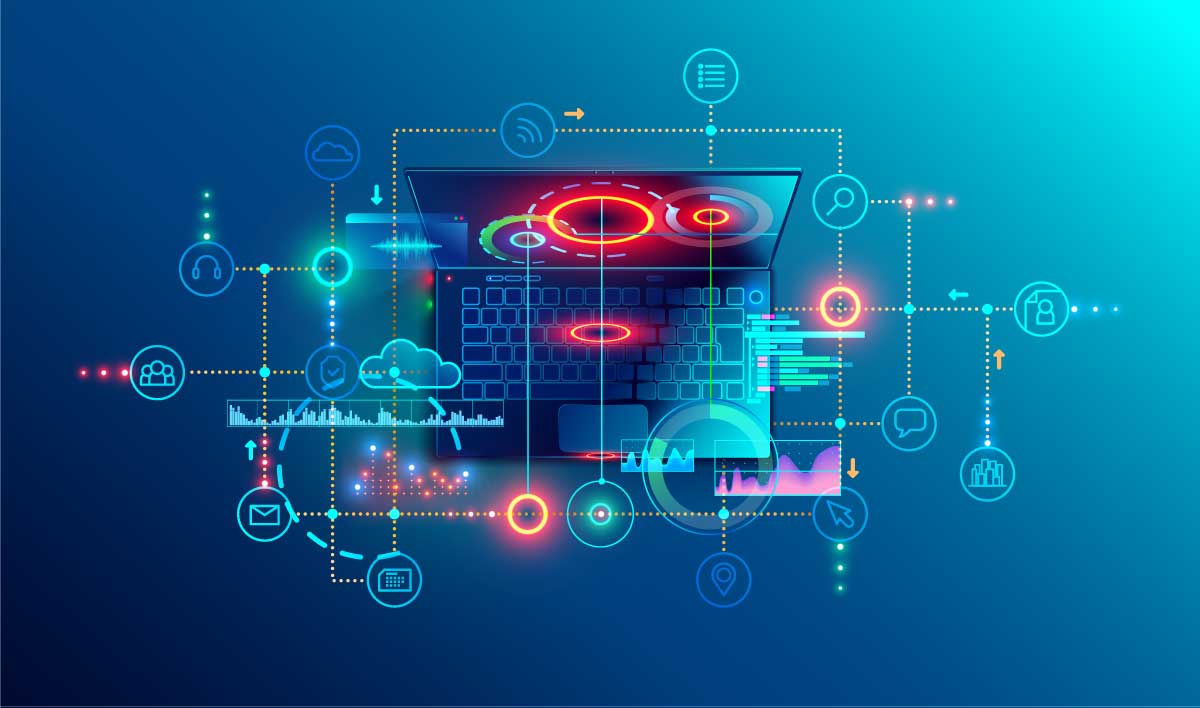In a recent blog post, we highlighted some of the challenges faced by organizations leveraging EDI and why you shouldn’t wait to modernize your EDI and B2B integration capabilities. In this post, we’ll highlight different ways to modernize your approach.
First, Consider Migrating to a Modern EDI Solution
The first step is an obvious one. If you still use EDI / B2B integration software that the vendor has deprecated or no longer supports, you should move to an actively developed, modern solution. When the software or platform no longer receives updates, upgrades, or vendor support, you open your business to security vulnerabilities. When you use aging platforms, it increases the complexity of your business systems, and customization becomes increasingly difficult.
You should migrate from deprecated and unsupported B2B and EDI integration solutions to modern ones that will better benefit your business.
For example, IBM no longer supports some versions of IBM Sterling Gentran. If you currently use outdated versions of this software for EDI and want to modernize, a great modernization path is migrating to IBM B2B Integrator (B2Bi). B2Bi provides comprehensive:
- EDI Mapping (based on Gentran).
- Any-to-any communications adapters.
- Business process-based transactions.
It also provides a modern security framework, alerting and reporting, and automated exception handling.
For more information, check out our webinar, Migrating from IBM Sterling Gentran to B2B Integrator.
Next, Consider Leveraging the Cloud
You have several cloud options for modernizing your approach to B2B and EDI integration:
Leveraging the Cloud
You have several options for modernizing your approach to B2B and EDI integration:
Adopt a Hybrid Cloud Approach
A hybrid cloud approach means you connect and operate cloud services (public and private) and legacy on-premises software together to create a more extensive and efficient system. Your hybrid cloud approach could include APIs as part of modernizing your B2B integration capabilities. However, many companies have existing interfaces and workflows that depend on exchanging files and processing EDI documents. This is an important consideration.
You should look for a modern integration solution that will bridge the gap between EDI and API use cases. This lets you continue to use the integration capabilities you already have while also modernizing your integration approaches with APIs.
Move EDI to the Cloud
Moving all EDI applications and operations to the cloud may not be suitable for some companies, but for others, it makes sense to take the leap.
According to a McKinsey & Company report, businesses that move forward with cloud adoption stand to gain access to $1 trillion in business value.
The benefits of moving EDI to the cloud are many, including scalability and resiliency. Also, unlike legacy on-premises software, some cloud EDI solutions enable you to leverage modern technologies like APIs, artificial intelligence, and cognitive capabilities.
Adopt a Multi-Cloud or Multi-Solution Approach
Depending on your business needs, there may not be a single EDI solution or single cloud that addresses all of your needs and goals. For some organizations, leveraging multiple cloud-based integration solutions or services can provide additional benefits, including:
- Flexibility — You can choose services based on specific criteria.
- Innovation — You can use the latest and greatest technologies offered by different solutions.
- Reliability — Helps to mitigate risk and minimize disruption in the event of an outage.
Recommendations for Successful B2B Modernization
When it comes to modernizing your B2B and EDI integration capabilities, here are some of our recommendations:
- Start with a single, modern B2B integration gateway — With a modern and scalable B2B integration gateway, such as IBM Sterling B2B Integrator, you can support the growing volume, variety, and velocity of B2B communications with ease. You also improve security through regular updates and support.
- Consolidate your current B2B integration platforms — If you have many disparate B2B integration platforms, you should consider consolidating some of them into one integration solution. Consolidation will help simplify maintenance and management, reduce your overall integration costs, and decrease the complexity of your B2B integration processes.
- Leverage a proven B2B Framework to accelerate modernization — You can significantly reduce the time and costs of implementing, migrating, and managing a B2B integration solution if you leverage a B2B framework, such as our B2B Framework for IBM Sterling B2B Integrator.
- Leverage a modern Value Added Network or B2B Collaboration network — Leveraging a solution like IBM Sterling Supply Chain Business Network, you can simplify and speed up the process of connecting with trading partners, suppliers, and customers. You’ll connect quickly with a network of more than 800,000 pre-connected trading partners and gain access to a wide variety of modern capabilities such as AI, cognitive capabilities, analytics, real-time insights, and more.
- Automate B2B integration processes — Leveraging process automation capabilities in modern solutions, you can accelerate communications and processes while reducing the number of errors.
- Automate and streamline the partner onboarding process — Spending time manually gathering information about trading partners, registering them, and creating partner agreements can be a time-consuming process – but it doesn’t need to be. Leveraging modern tools like our B2B Framework, Partner Engagement Manager, and IBM Sterling Transaction Manager, you can speed up the partner onboarding process significantly, automate tasks, and reduce costs. You can also provide partners greater control with an easy-to-use, self-service web portal.
- Implement advanced visibility and analytics tools — Modern B2B integration solutions enable you to use advanced analytics and AI technologies to gain deep visibility into integration processes. Solutions like Eliassen Group Visibility Portal, IBM Sterling Business Transaction Intelligence, and IBM AI for Supply Chain can provide greater visibility and control of all the data flowing through your B2B integration platform, as well as other platforms connected to it.
- Consider leveraging EDI-managed services or cloud EDI services from a trusted partner — Our B2B Integration Managed Services solution lets you achieve the full benefits of B2B integration while also reducing the burden on your resources. Our cloud EDI services help you modernize while improving overall performance, scalability, and efficiency.
Where does your company stand on modernizing B2B integration?
Contact us to schedule a chat with one of our B2B integration experts, who can help you choose the best approach for your business.



